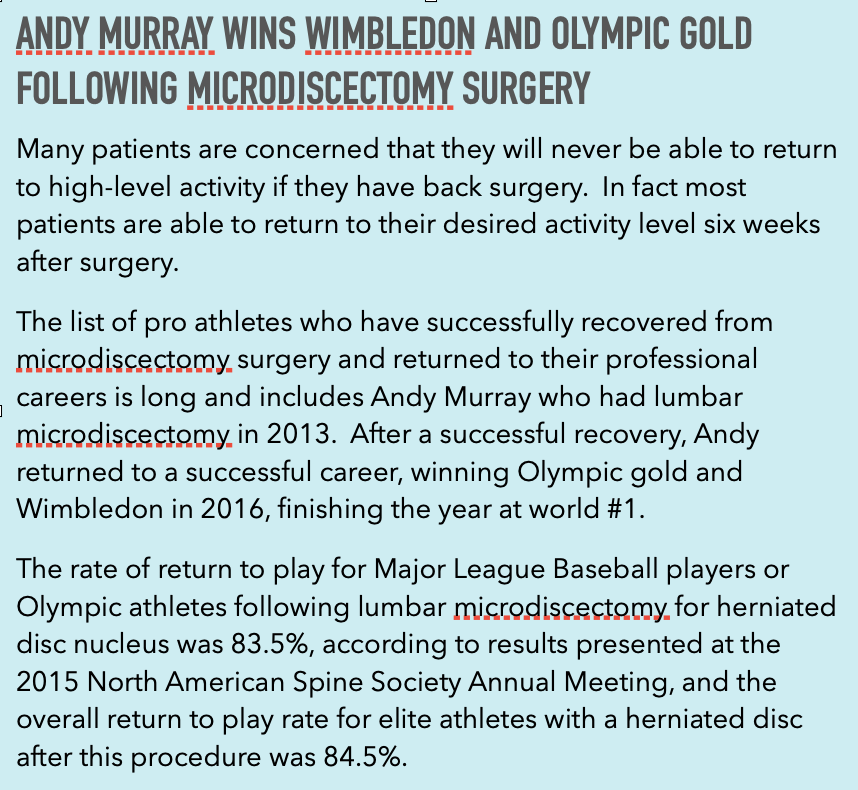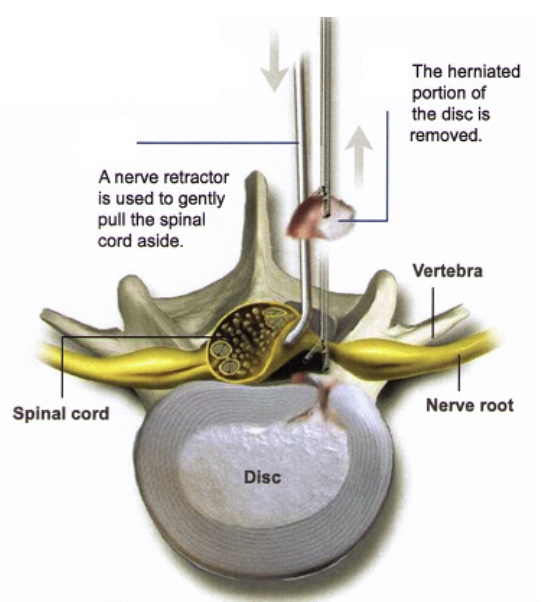Lumbar Microdiscectomy
Lumbar Microdiscectomy
Lumbar radiculopathy is a term used to describe radiating leg pain, numbness or weakness caused by pinched nerves in the back. This can be caused by ruptured (herniated) discs that compress the nerves in the spinal canal. The lumbar microdiscectomy is a minimally-invasive procedure that can relieve the back and leg pain caused by this condition.
Advantages of Microdiscectomy:
- Less than 1 inch incision
- Outpatient
- Minimal Blood Loss
- Quick Recovery


If You Have Decided To Have Surgery:

- Call Dr. Jeffords’ staff to schedule your surgery date and the date for your pre-operative consultation.
- At your pre-operative consultation Dr. Jeffords or his P.A. will discuss the procedure with you, answer any questions you may have, and have you sign a consent form for surgery.
- You will be given prescriptions for pain medicine and instructions for post-operative care.
- Your pre-operative evaluation at Saint Joseph’s Hospital or Resurgens Surgery Center (depending on where your surgery will be) will be scheduled on the same day as your pre-operative consultation. You may have a chest X-ray, EKG, and blood-work performed.
- If you take aspirin or anti-inflammatory medications daily, STOP these medications at least 7 days before your surgery.
- If you are a smoker you should make every effort to stop smoking as soon as you can before surgery (at least 2 weeks prior to surgery). You should not smoke for at least 6 weeks after surgery.
- You will check into the hospital or the surgery center the morning of surgery.
Surgical Procedure:
- Your anesthesiologist will bring you to the operating room and put you to sleep for the operation.
- There are usually two nurses in the room and a surgical assistant that assists Dr. Jeffords with the operation.
- A small incision (usually about one inch or less) is made in middle of your lower back
- After carefully moving the muscle tissue, a small retractor is placed to expose the back of the spine.
- A “window” to the spinal canal is created by removing a small amount of bone. This is called a laminotomy.
- The pinched nerve is gently moved to the side and the herniated disc material is removed from underneath the nerve. Only a small portion of disc material is removed.
- The incision is closed with resorbable stitches that are placed beneath the skin.
- The surgery will take approximately 1 hour.

After Surgery:
- You will be taken to the recovery room (PACU) and stay there for about 1hour.
- Dr. Jeffords will speak to your family while you are in the recovery room.
- The nurses will get you out of bed shortly after surgery and a physical therapist may work with you to ensure that you are strong enough to go home.
- You will go home the day of surgery, typically within an hour after the operation.
- You will be able to ride in a car or plane upon leaving the surgery center.
After Going Home:
- A small dressing is placed over the incision in the operating room. You will remove this dressing 7 days after surgery. Underneath the dressing are steri-strips. The steri-strips will stay on until you see Dr. Jeffords in the office two weeks after surgery. You may shower over the dressing and then the steri-strips.
- You will be given pain medication and a muscle relaxant to help control post-operative pain and spasms. Make sure you do not drive or operate heavy machinery while on the medication.
- There will be some activity restrictions that you will need to follow. For the first six weeks, no significant bending or twisting at the waist, and no lifting more than 20 lbs.
- You may drive once you are off of your medications (generally at about 3-5 days).
- You can expect to return to sedentary office or desk work approximately 3-5 days after surgery as long as you can maintain the activity restrictions.
- If you perform manual labor that requires heavy lifting or frequent bending or climbing, you should wait 6 weeks before returning to this activity.
- Sports activities such as golf or tennis may be resumed at 6 weeks.
